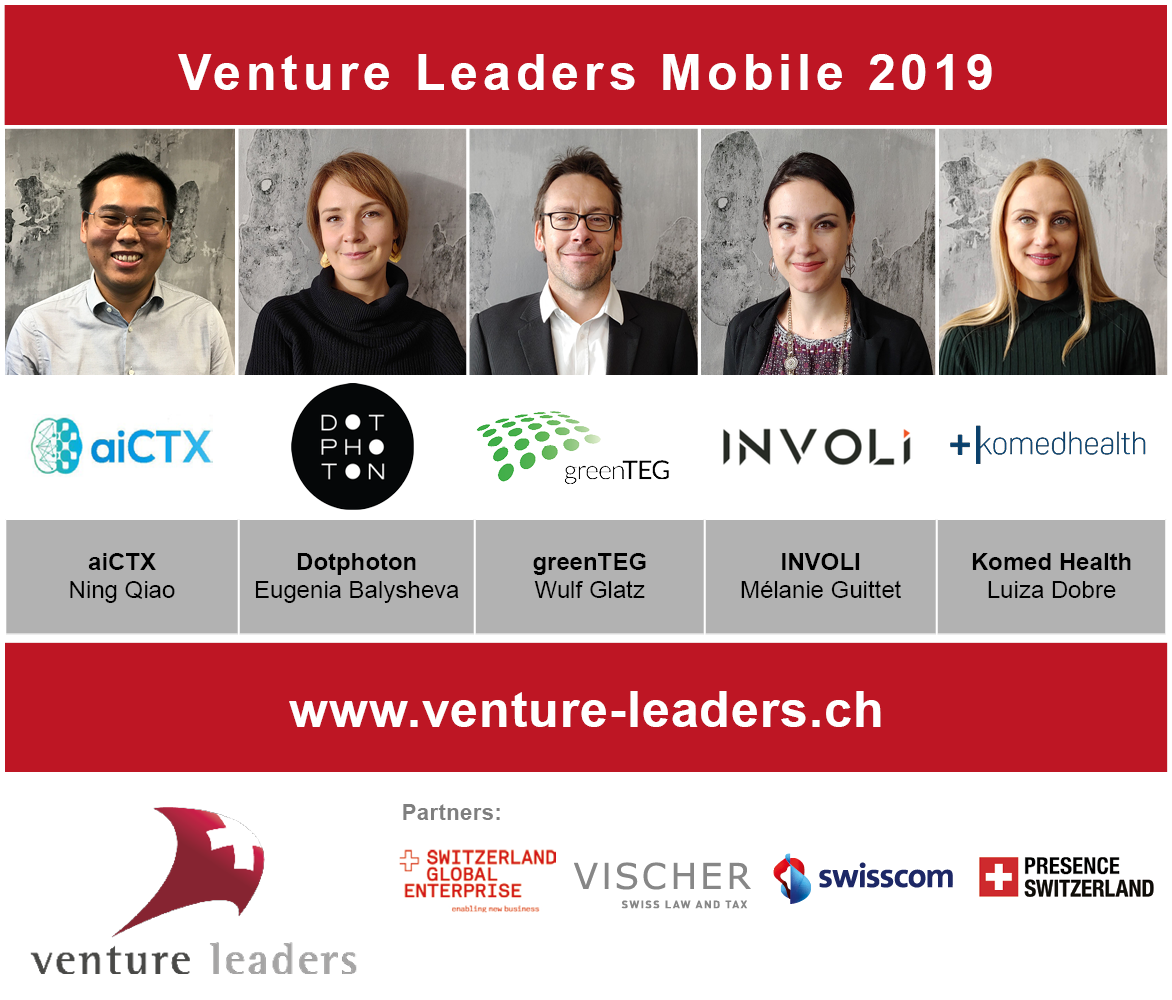Five entrepreneurs will represent Switzerland at Mobile World Congress Barcelona this month. In the second interview with the Venture Leaders Mobile team, meet Ning Qiao, chief executive of aiCTX AG, and learn about building the brains to make neuromorphic computing a reality, fundraising and his next vacation.
aiCTX AG is spin-off from the Institute of Neuroinformatics (INI) at ETH Zurich and the University of Zurich. Modern computing architecture, described by John von Neumann in 1945, is set to be replaced by neuromorphic computing that mimics human neural networks. The Swiss company is developing ultra-low-power, neuromorphic chips to enable devices anywhere to react intelligently and instantly.
What are the advantages of neuromorphic computing?
Neuromorphic means brain-inspired. It has existed for more than 20 years. It isn't a new technology – no-one is using it currently, because it is a difficult technology.
At INI there are hundreds of people researching the how human neural networks and brains work, paired with groups on the hardware side trying to engineer the same thing. One example is the human retina and a dynamic vision sensor, which mimics how the human eye only tracks movement and moving things, not static things. We've had these dynamic vision sensors – the 'eyes' – for probably 10 years, just the brain was missing. This is our task. We're building the brain to make it a whole system, a full system.
One change is on a systemic level. You can't just plug these chips into a normal computer, you have to build the whole system to make it work. Like in humans: we have dynamic vision – our eyes only 'see' the moving elements, not the static backgrounds. You need your biological brain to get the benefit of your biological eye's really sparse input. This sparsity requires less data and is 100 times more efficient. The other change is on the process side. Neuromorphic computing moves away from the von Neumann architecture. It's not a logic block with a big memory, it's distributed with 'neurons', local nodes, with local memory, performing parallel computing everywhere. It's a totally new network.
What do neuromorphic chips mean for mobile technology?
Event-driven and parallel computing, which requires much less power. Event-driven means the processor only computes when an input triggers it. The chip doesn't exert power when there isn't image in front the camera or no sound around a microphone. You don't need static power, because there's no high-frequency clock on the CPU anymore. With neuromorphic chips everything can happen in each node in parallel, so you don't spend energy moving data between sensors and a centralized logic block. The result is ultra-low power requirements. The computing can all be driven by a tiny battery – the battery you have in your phone would suffice for 3,000 hours. It means you can apply a smart vision sensor anywhere
What are the two products you're showing at Barcelona?
Our chips can connect directly with the dynamic vision sensor to perform ultra-low power, event-driven vision tasks that could be integrated into mobile devices, smart furniture and internet-of-things that want facial recognition. We're also bring our demo of hardware for electrocardiogram annomally detecting. At the moment no-one in the world can do continuous, real-time ECG processing on a wearable. We can, using a maximum of 100 microWatts, with local, real-time processing.
What do you expect in Barcelona? Who do you want to meet?
Seafood? [Laughs] I'll be trying to get more customers to use our technology in their phones and wearable devices. We're trying to push real-time ECG recording to smartwatch-makers. I want to meet Intel, Qualcomm, internet-of-things companies like Bosch, and talk to phone companies like Huawei, Samsung and Sony. I also want to talk with more European investors. I have lots of connections with investors in China, and talk with some of the biggest AI companies, but I don't have enough connections in Europe. We're an international company and would like to involve international investors.
Are you looking to raise at the moment?
We aim to close a $10 million round before August.
Baidu Ventures, the investment fund of the world's second-biggest search engine, invested in a pre-A-round last year. How did that deal happen?
They were in touch with us from the very, very beginning. When we did the seed round in 2017, they contacted us and said they really wanted to invest. At the time we didn't need the money, so we said no. They kept in touch with us, at conferences, via WeChat and by email, talking about our news and research.
How did you celebrate closing that deal?
I didn't. I'll celebrate when we see our company's logo appear in people's rooms, and when their devices open and start. I want to see our product in daily life.
Also I cannot relax – I'm the CTO as well as the CEO, so I'm working on this project all the time. I haven't had a holiday for a long time. When we close the $10 million, then I'll take a vacation. I want to be on an island. I'd like to bring my whole team there for an isolated month, or maybe just two weeks.
What's the best thing about being an entrepreneur, compared to teaching at ETH?
It's more real. It's not just publishing papers -- you have to try to convince people who don't understand the technology.

The Swiss National Startup Team's roadshow to MWC Barcelona is organized by Venturelab in cooperation with Switzerland Global Enterprise, VISCHER, Swisscom and Presence Switzerland.
Follow the Venture Leaders Mobile roadshow (February 24th to 28th) on social media using the hashtags #VleadersMobile #SwissTech



